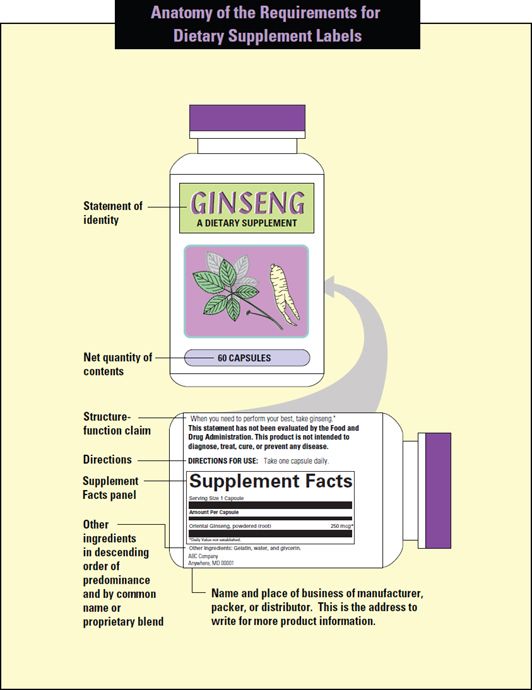
This illustration provides an example of a dietary supplement label as required by the Food and Drug Administration.
Distributing Medications and Providing Patient Counseling and Education
If part of your job is to hand the completed prescription to the patient (and/or collect the money for the prescription), then you must be aware of several important issues. These include storage of the medication before distribution, helpful information you can provide to the patient, and legal requirements about information the pharmacist must provide to the patient. In the retail setting, handling money will also be important.
Medication Storage
The storage of medications, a very important issue, is the subject of much attention in the pharmacy world (see Chapter 14, Special Considerations: Drug Formularies, Storage, Recalls, Shortages, and Diversion). An increasing number of medications must be stored at specific temperatures (such as frozen, refrigerated, or room temperature). The medications are generally stored at the specified temperature all the way through the drug-distribution system—from manufacturer to wholesaler to pharmacy to patient. However, some medications that are refrigerated in the pharmacy (such as an antibiotic) may be stored at room temperature by the patient if they are to be taken over only a few days.
Because of storage considerations, you should ensure the following:
- Once a prescription is prepared, it should be stored at the proper temperature in the pharmacy until it is delivered to the patient. For instance, if a prescription or refill is called in, but the patient does not pick up the medication for a few hours or days, it should be stored properly until the patient arrives.
- When you hand prescriptions to patients, be sure they understand how to store medications when they get home. Be certain patients understand the difference between frozen (“keep this in your freezer, where your ice is”) and refrigerated (“keep this in your refrigerator, where you put your milk”).
- If a prescription is being delivered by car, mail, or other carrier, it must not be exposed to extreme temperatures (such as left in a hot car during the summer) or kept outside its normal storage temperature for more than 24 hours. You may need to pack refrigerated or frozen drugs in an insulated container—perhaps even one containing ice or dry ice (Figure 8-3)—if delicate drug products are being shipped.
Information for the Patient
Stay updated, free articles. Join our Telegram channel

Full access? Get Clinical Tree


